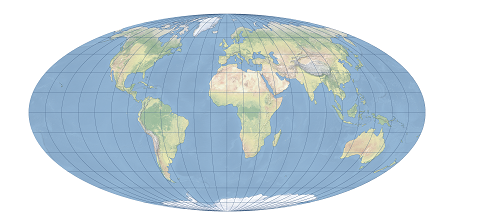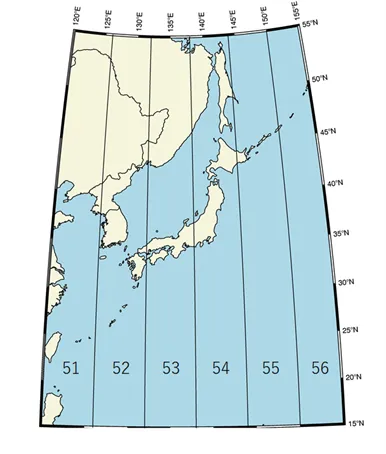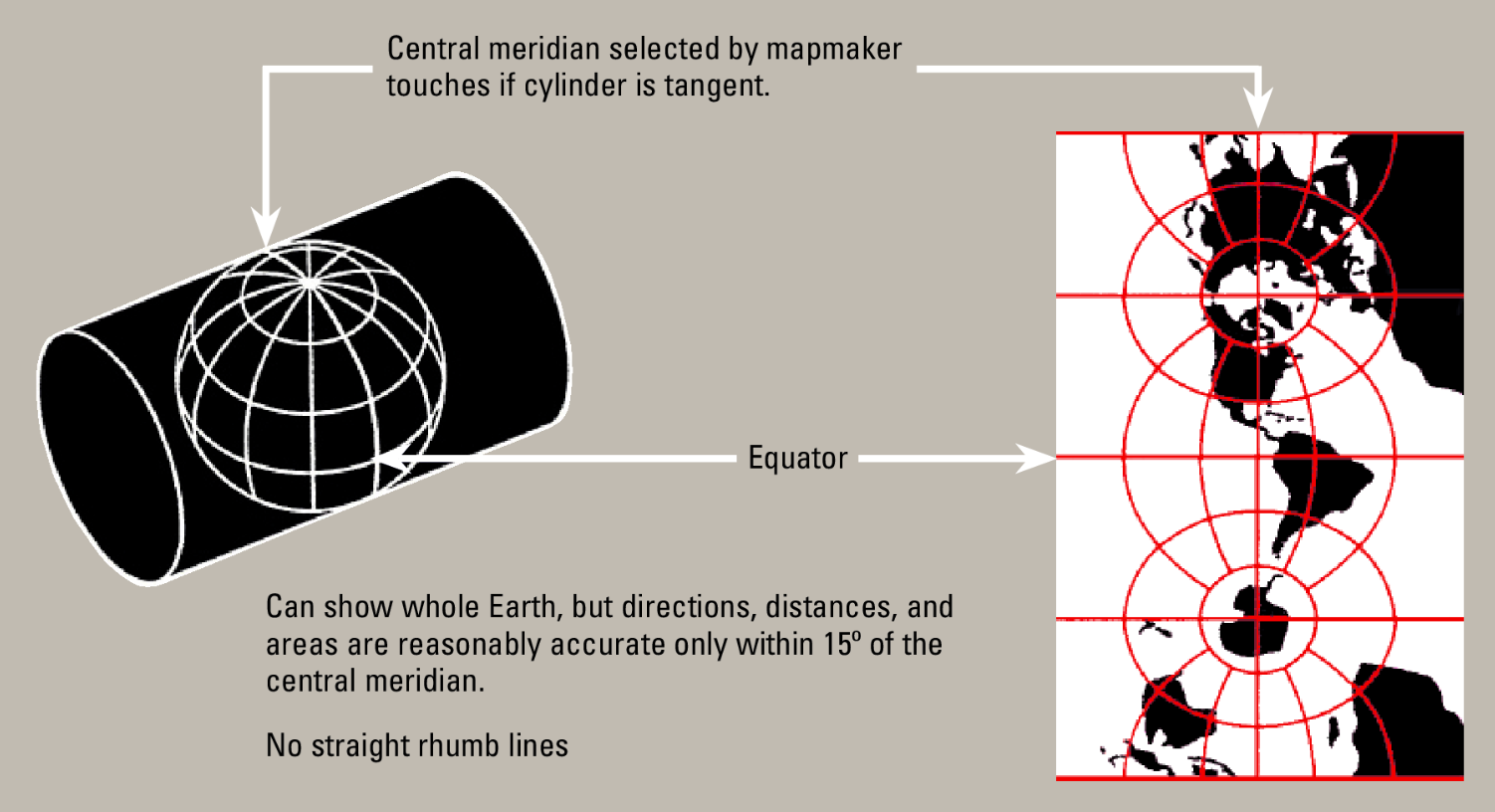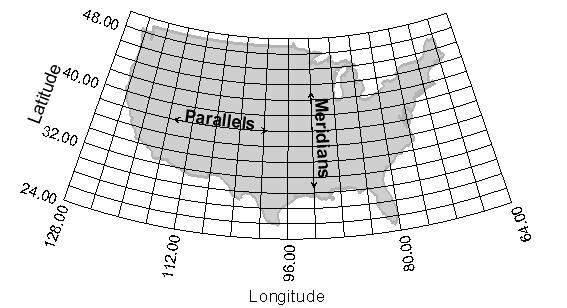Eckert Projection
Eckert projection is a general term for map projections invented by the German geographer Max Eckert in the early 20th century. He developed six projections (Eckert I to Eckert VI) with different characteristics, each of which represents the Earth's surface from a different perspective. These projections are mainly classified as pseudocylindrical projections, and Eckert IV and VI in particular are widely used in education and geographical materials due to their area accuracy (equal area) and good visual balance.
2025-11-05 15:30:28Gnomonic Projection
Gnomonic projection is a method in which a straight line is drawn from the center of the Earth to any point on the Earth's surface, and projected to the point where it intersects with a plane tangent to the Earth. This is a type of perspective projection (central projection), and has the characteristic that "great circle routes (shortest routes)" on the Earth are represented as straight lines after projection. For this reason, it is very useful when you want to show the shortest distance with a straight line.
2025-11-05 15:25:56Orthographic Projection
Orthographic projection is a map projection method that depicts the Earth as if seen from an infinite distance. It is used to maintain a certain degree of accuracy while maintaining a sense of depth when projecting a spherical surface onto a flat surface. It can reproduce the appearance of a part of the Earth as seen from space, allowing for realistic and beautiful map representations. This projection projects the Earth's surface onto a flat surface through a straight line drawn vertically from the center of the Earth, so it places more importance on a natural appearance and intuitive understanding than on the accuracy of distance and area.
2025-11-05 15:23:40Azimuthal Equidistant Projection
Azimuthal equidistant projection is a map projection that is drawn to accurately maintain direction and distance from a single point (reference point) on the Earth. Its greatest feature is that the straight-line distance and azimuth angle from the center point to all other points are accurately represented on the map. It is often used in applications where accuracy of direction and distance is important, such as air navigation and communications.
2025-11-05 15:21:19Mollweide Projection
Mollweide Projection is an equal-area pseudocylindrical projection proposed by German mathematician Karl Brandan Mollweide in 1805. The projection maps the earth’s surface onto a flat surface through mathematical transformation, aiming to maintain the accuracy of area ratio while minimizing the distortion of shape and direction. The central meridian of the Mollweide projection is a straight line, the other meridians are symmetrical elliptical arcs, the parallels are parallel straight lines, and the length of the equator is twice the length of the central meridian.
2025-09-16 14:47:03Stereographic Projection
Stereographic projection is a method of projecting points on the surface of the earth or sphere from a certain point (usually a pole) of the sphere onto a plane. This projection method distributes points on the sphere and projects them from a certain point to the projection plane opposite it, and finally presents them in the form of a circular map. This method was invented by ancient Greek mathematicians and is widely used in many fields such as astronomy, crystallography and map making.
2025-09-16 14:47:04UTM (Universal Transverse Mercator)
UTM projection (Universal Transverse Mercator) is a coordinate system that divides the earth’s surface into zones and applies the Transverse Mercator projection to each zone. By dividing the earth into 60 zones, each zone is 6 degrees longitude apart, and projecting independently in each zone, high-precision plane rectangular coordinates can be obtained.
2025-09-16 14:46:59Transverse Mercator Projection
Transverse Mercator projection is a conformal cross-cylindrical projection that cuts the Earth ellipsoid along the meridian (central meridian) and unfolds it into a plane. It is widely used in large-scale topographic mapping and national coordinate systems (such as the UTM coordinate system) in mid-latitude regions.
2025-09-16 14:46:59Robinson Projection
Robinson projection is a compromise projection designed by Arthur H. Robinson in 1963 at the request of the Rand McNally Company. It was developed using graphic design rather than mathematical equations to provide a balanced visual effect for world maps. The projection is a pseudo-cylindrical projection. The meridians are regularly distributed curves that imitate elliptical arcs. They are concave to both sides with the central meridian as the center and do not intersect the parallels perpendicularly. The parallels are unequally distributed straight lines. The equator, the poles, and the central meridian are all projected as straight lines. The length of the central meridian is 0.5072 times the length of the projected equator, and the length of the polar line is 0.5322 times the length of the equator. The graticule is symmetrical along the equator and the central meridian. It is neither conformal nor equal-area, which will cause shape, area, distance, direction, and angle distortion. Area distortion increases with increasing latitude, but is not affected by changes in longitude. High latitudes will be exaggerated. Angular distortion is moderate near the center of the map and increases toward the edges. Distortion values are symmetrical along the equator and the central meridian.
2025-09-16 14:47:01Longitude / Latitude Projection
Longitude / Latitude Projection uses the longitude and latitude coordinate system of the earth, usually in degrees. The basic principle is to imagine a cylinder that is consistent with the direction of the earth’s axis and cuts or severing the earth, project the longitude and latitude grid onto the cylindrical surface according to the equiangular condition, and then unfold the cylindrical surface into a plane to obtain a plane longitude and latitude grid. After projection, the meridians are a set of vertical equidistant parallel straight lines, and the latitudes are a set of parallel straight lines perpendicular to the meridians. The interval between adjacent latitudes increases from the equator to the poles.
2025-09-16 14:46:58
 Service
Service

_1762327884081.png)
_1762327683829.png)
_1762327491402.png)
_1762327362104.png)





